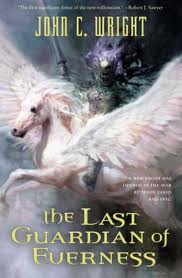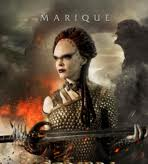Zero Fantasy
Ten thousand gallons of virtual ink have already been spent on the subject of cliché elves’n’dwarves’n’rogues’n’rangers fantasy. But here’s a few droplets that I think are worth noting.

Ben “Yahtzee” Croshaw, for those not fully assimilated into the etherium of the web, is a popular reviewer of games and maker of funny videos. He’s also the author of Mogworld, which I haven’t read. Anyway, in his recent video review of the fantasy RPG Kingdoms of Amalur, he introduces a point which he expands on in the first few paragraphs of this essay. Why does fantasy, theoretically the genre of limitless possibilities, so often fall back on the same stock elements (elves, dwarves, pseudo-Europe, fireballs, etc.)?
Now, here’s the thing: I think Yahtzee is largely arguing against a historical problem, at least when it comes to books. Gaming may be different, with Dragon Age, Skyrim, and World of Warcraft riding high on a post-Tolkien wave of their own. But when it comes to books, I’m honestly not seeing much of the cliché elf and dwarf pie being produced.
There are certainly shared universes, whether they be roleplaying settings like Pathfinder or Eberron, or the enormous line of Black Library titles for Warhammer and Warhammer 40K, but they don’t make any claims to originality of setting or trapping. Many of those books tell great stories with memorable characters, but they do so with familiar elements and surroundings, and pretend to do more. There’s something comforting about that, actually, and I rather enjoyed the only Pathfinder novel I read.
But in the wider world of fantasy, I’m just not seeing a glut of elves and dwarves or anything that’s recognizably derived from D&D. I’m seeing Brandon Sanderson, Jim Butcher, Brent Weeks, and Harry Conolly, James Enge and John C. Wright and Scott Lynch. Well, okay, Enge has dragons and dwarves, but no one would mistake Morlock’s world for Forgotten Realms.
 The Last Guardian of Everness
The Last Guardian of Everness I’m planning a more lengthy post on the role of religion and spirituality in fantasy (expanding on some things I hinted at in my last post, which involved orc samurai), but the last couple weeks have been so crammed with lounging on beaches, jujitsu, and job hunting that I haven’t had the opportunity to give it the work it deserves. So, instead, I present:
I’m planning a more lengthy post on the role of religion and spirituality in fantasy (expanding on some things I hinted at in my last post, which involved orc samurai), but the last couple weeks have been so crammed with lounging on beaches, jujitsu, and job hunting that I haven’t had the opportunity to give it the work it deserves. So, instead, I present:


 Twelve
Twelve